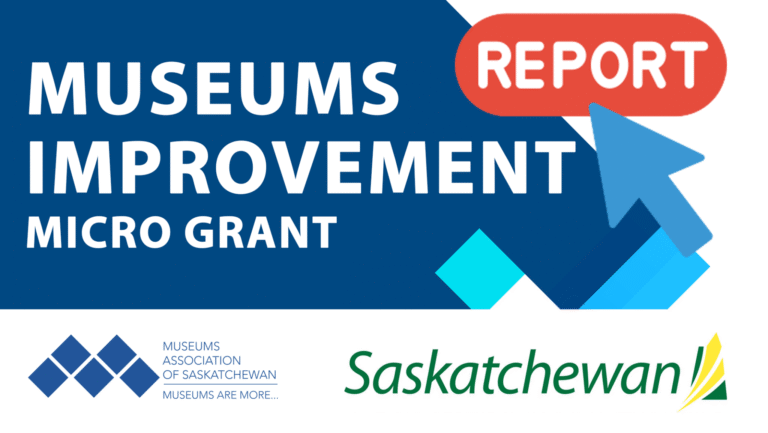Assistant Curator – Wanuskewin Heritage Park
Are you an emerging Indigenous museum professional ready to help share stories that have lived on this land since time immemorial? Wanuskewin Heritage Park invites you to step into a
Conducting (and Maintaining!) a Collection Inventory: Part 1: Introduction to Inventories
By: Kathleen Watkin, MAS Advisor
What is an Inventory?
An inventory is an itemized list of objects that the museum has accessioned or received via loan(s) and must be physically located by an examiner. A complete, one-hundred percent inventory, must be carried out periodically to ensure the museum is operating under best practices and for security purposes. The museum is legally responsible and ethically obligated for the maintenance of up-to-date information detailing the location of all objects within the collection, including loaned items and objects that have yet to be accessioned.
Why do we need to conduct an Inventory?
An accurate inventory is the foundation of just about everything else we do within a collection institution. We need to remember that museums hold their collections in the public trust and before we can conserve, exhibit, digital, publish or interpret we need to know what our collections contain. It is the responsibility of all members of the museum to be involved and invest time and energy into the inventory as it is the central ideas and objects that connect us all. In order for a collections inventory to succeed it must be an institution wide priority.
Inventories need to be conducted because it is our fiduciary responsibly as museum staff to:
An accurate inventory can identify artifacts that are in need of conservation or need new or different storage to mitigate deterioration. An inventory can identify objects that can cause a hazard to the rest of the collection, for example nitrile photographic negatives or are a hazard to the museum staff, such as taxidermed specimens which contain arsenic. This objects are identified and they can be separated or stored appropriately.
Taking care of a collection does not only mean taking physically care of the collection. Research and interpretation of the collection can only happen when we know what stuff we have and where it is stored or is on display.
Despite all our preparation and due diligence, accidents happen. An accurate up to date inventory can support insurance claims in disasters and can identify missing or stolen objects, so that the appropriate authorities can be informed.
By having up-to-date inventories, Museums actually save money in terms of personnel looking for a specific object. An accurate inventory makes everyone’s jobs easier and more efficient on a day-to-day basis.
Types of Inventories?
Random (or Spot) Inventories
Random (or Spot) Inventories are extremely limited in scope. They are primarily used to verify the location of a representative sampling of objects. They are often completed on a regular basis after a full inventory has been completed to ensure that a more thorough inventory does not need to be completed. Because of the limited scope of the inventory, Random (or Sport) inventories are often also referred to as an audit of a collection.
Partial (or Section-by-Section) Inventories
Partial (or Section-by-Section) Inventories are limited in scope and usually focus on a particular display or storage location. These types of inventories are often conducted when an exhibition is being created or disassembled to ensure that all objects are in or returned to their documented storage location. While these inventories are more useful then random/spot inventories, their limited scope results in them being unable to be definitively reconciled against museum records.
Complete Inventories
Complete Inventories are inventories that look at every object, including permanent and loan objects in the museum and ensures their documentation is up to date. Often called Wall-to-Wall or Baseline inventories, Complete Inventories ensure that the location and general condition of every object is known and documented. Because of the thoroughness of Complete Inventories, the results can be authoritatively reconciled (or justified) against museum records.
Are you an emerging Indigenous museum professional ready to help share stories that have lived on this land since time immemorial? Wanuskewin Heritage Park invites you to step into a

Usual office hours will resume on January 5th, 2026

Just a reminder that the Final Report for the Museum Improvement Micro Grant for Community Museums is due December 5th! Your final report will require you to provide a brief